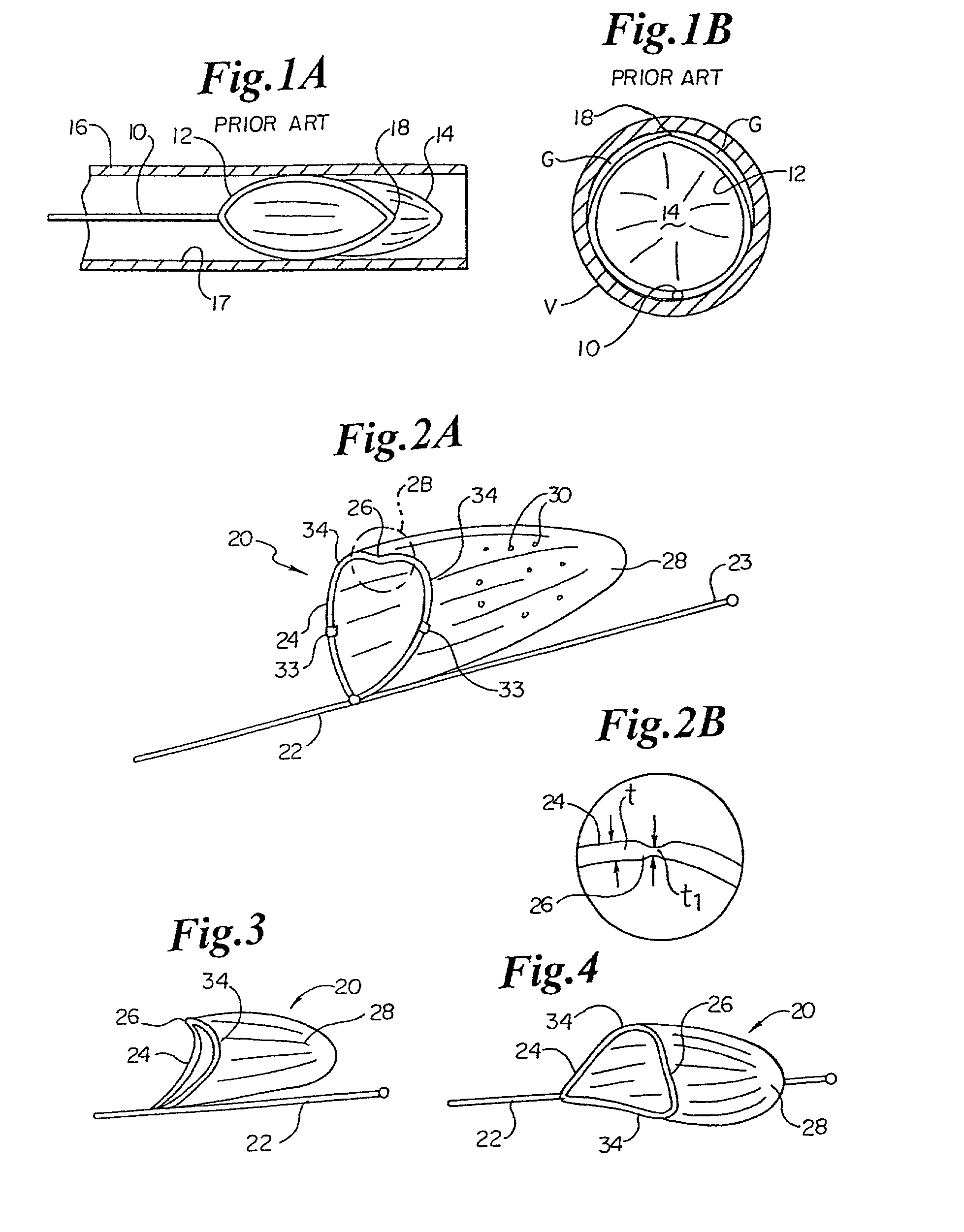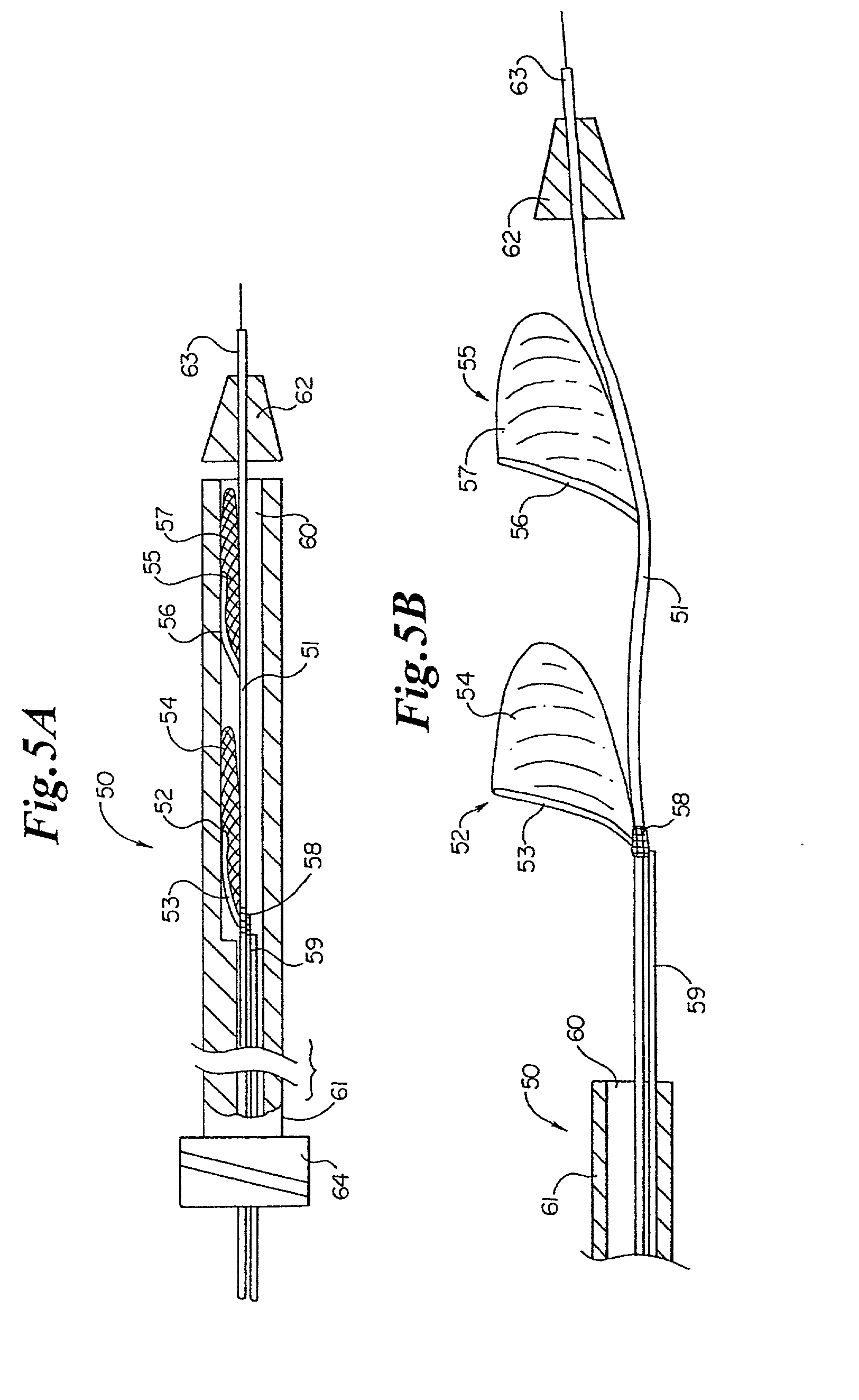Vascular device for emboli and thrombi removal and methods of use
a vascular device and emboli technology, applied in the field of vascular devices for emboli and thrombosis removal and methods of use, can solve the problems of emboli formation, ischemia poses a serious threat to the health or life of patients, blockage of blood flow to tissue, etc., to facilitate percutaneous introduction, prevent articulation, and increase stiffness and kinking.
- Summary
- Abstract
- Description
- Claims
- Application Information
AI Technical Summary
Benefits of technology
Problems solved by technology
Method used
Image
Examples
Embodiment Construction
[0071]Referring to FIGS. 1A and 1B, some of the disadvantages associated with-previously known vascular devices, such as the emboli filters described in the above-mentioned International Publication WO 98 / 39053, are described. In FIG. 1, the vascular filter comprises guide wire 10 having hoop 12 coupled to its end. Filter sac 14 is affixed to hoop 12, so that when delivery catheter 16 is retracted proximally and guide wire 10 is held stationary, hoop 12 radially expands to contact the walls of vessel V.
[0072]As described hereinabove, one difficulty with such vascular filters is that the hoop used to support the filter sac experiences increased stiffness when contracted to small diameters, i.e., due to the sharp directional change at the tip of the hoop, thereby limiting the minimum delivery profile achievable for such instruments. Although this effect may be reduced by decreasing the thickness of the wire employed in hoop 12, at the point at which the wire becomes sufficiently thin ...
PUM
 Login to View More
Login to View More Abstract
Description
Claims
Application Information
 Login to View More
Login to View More - R&D
- Intellectual Property
- Life Sciences
- Materials
- Tech Scout
- Unparalleled Data Quality
- Higher Quality Content
- 60% Fewer Hallucinations
Browse by: Latest US Patents, China's latest patents, Technical Efficacy Thesaurus, Application Domain, Technology Topic, Popular Technical Reports.
© 2025 PatSnap. All rights reserved.Legal|Privacy policy|Modern Slavery Act Transparency Statement|Sitemap|About US| Contact US: help@patsnap.com



